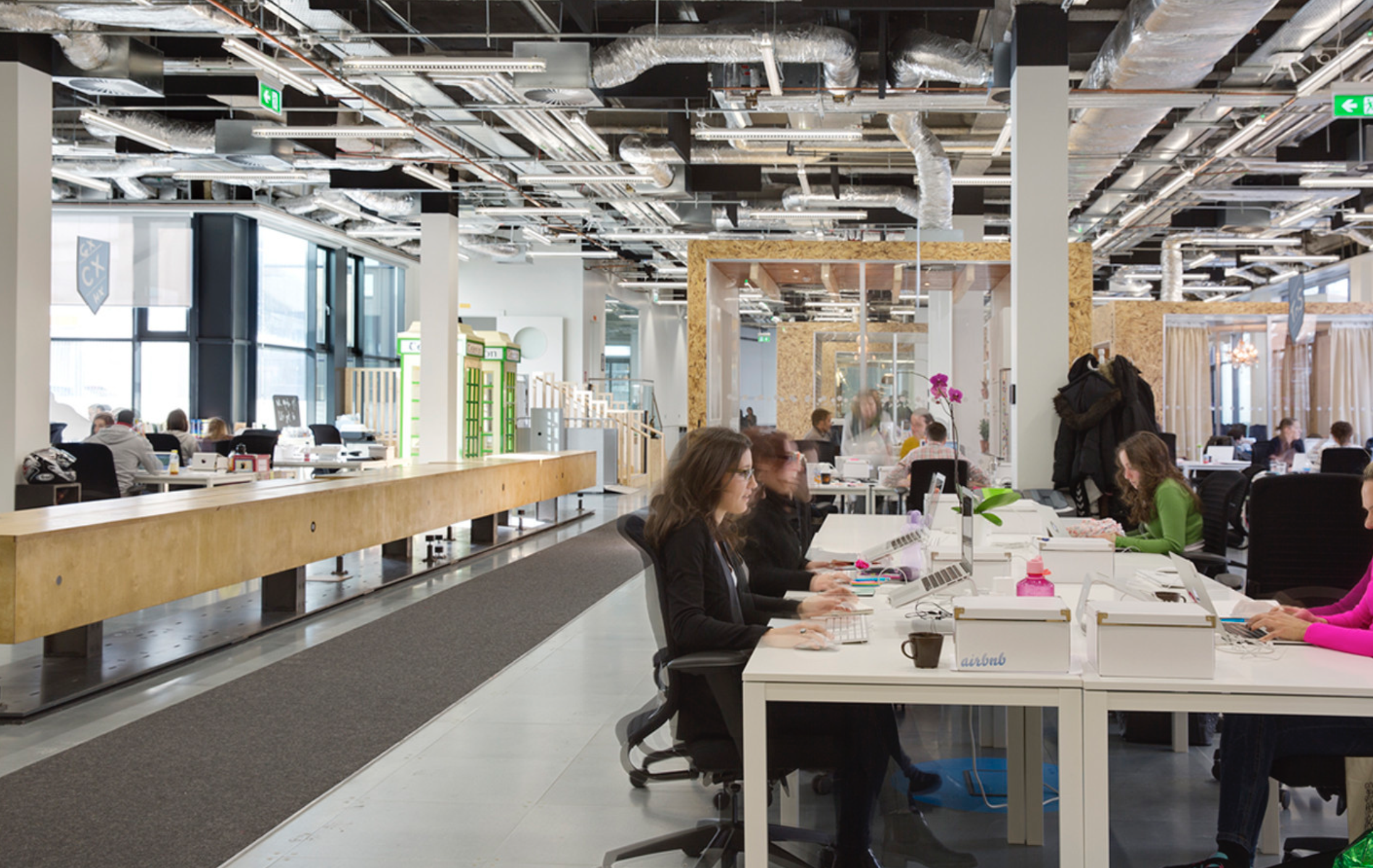
Not because there aren’t people who actually enjoy working in an open office, there are. Quite a few, actually. But they’re in the distinct minority. The vast majority of people either dislike the open office or downright hate it. So how is that going to work, exactly?
By force, of course! Open offices are more appealing to people in management because they needn’t protect their own time and attention as much. Few managers have a schedule that allows, or even requires, long hours of uninterrupted time dedicated to a single creative pursuit.
And it’s these managers who are in charge of designing office layouts and signing leases. It’s also these managers who are responsible for booking photo shots of the FUN-FUN office, giving tours to investors, and fielding interviews with journalists. The open office is an excellent backdrop for all those activities.
What it isn’t, though, is conducive to better collaboration. A new study shows that the number one argument for the open office, increased collaboration, is bullshit. Converting traditional offices with walls and doors and separation into open-plan offices causes face-to-face interaction to plummet, not rise. People try to shield their attention (and sanity!) by retreating into headphone-clad cocoons, and instead rely on instant messaging or email to interact. D’oh!
My personal distaste for the open office goes back to the turn of the millennium when I worked at several tech companies with open-office layouts. It was a tyranny of interruption, distraction, and stress. The quality of my work suffered immensely, and so did my mental wellbeing. I feel quite comfortable stating that I would never have been able to create Ruby on Rails or any of my other software or creative achievements in such an environment.
One particular incident from those days stand out. We were already working from an open office, but at least I had a desk with a wall behind me, so there was a modicum of privacy and psychological safety. Then management decided that it would “look better” if we went to circular desks where several of us would be sitting with our backs to the hallway, so everyone walking past would be looking at our screen as they passed. It took a minor rebellion that lasted several weeks before management backed down from that horrendous idea.
Now, an open office is a continuum. The absolute worst is when you have dozens of people from all different departments in the same room. Sales, marketing, support, administration, programmers, designers, what have you. These departments have very different needs for quiet or concentration or use of phones or open conversation. Mixing them together is peak bad open office design.
Less bad — but still not great — is to again have dozens of people in the same room, but from largely the same functions or complimentary ones. Programmers, designers, writers together. The problem here is that even within the same domain, different people will have very different sensibilities about what’s a reasonable level of conversation or interruption. Remember, there’s a sizable minority of even creative people who enjoy the open office!
And probably least bad is small team rooms of fewer than ten people, preferably fewer than six. I’ve sat together with really small teams before and that’s been OK. Some people who don’t like the open office at all might even still enjoy this configuration.
None of this is new. There’s been an endless stream of studies showing that the open-plan office is a source of stress, conflict, and turnover. And yet it’s still the default in tech. An almost unquestioned default. That’s a fucking travesty.
We’re squandering human health and potential on an epic scale by forcing the vast majority of people who dislike or hate the open office into that configuration. Their work deteriorates, their job satisfaction declines. And for what? Because a minority of people kinda like that configuration? Because it’ll look good in a few photos? Because it’ll impress strangers who visit the office? Get outta here.
The Basecamp office has a row of desks out in the open which we govern by Library Rules. We also have four private work rooms. Usually fewer than five people work from the office on any given day. The rest is remote. Want to learn more about how we try to keep it calm at Basecamp? Got a new book coming Oct 2, 2018 called It Doesn’t Have To Be Crazy At Work. Check it out.


This is SO true!
When I started work in my company, open office already has been there but all of people work with the same project and there was maybe 30 co-workes in one room. It wasn’t very comfortable but after things changed – and now we’re all forced to sit with business, designers, PR people – bigger teams, less place – it’s even worse.
Honestly, open office is the worst thing about my work and this style is freakin’ everywhere, wherever I’m attending job interview.
Stupid, anti-productive idea, meh.
I totally agree. Management think that workers will communicate more and spend less time doing distracting things like web-surfing, gaming, whatever. Cost-efficient approach, too. But it’s simply impossible to concentrate when there are people talking, walking and looking over your shoulder. Btw, when a movie shows some unhappy office clerk, (s)he is always sitting in a crowded open office. An essence of work discontent.